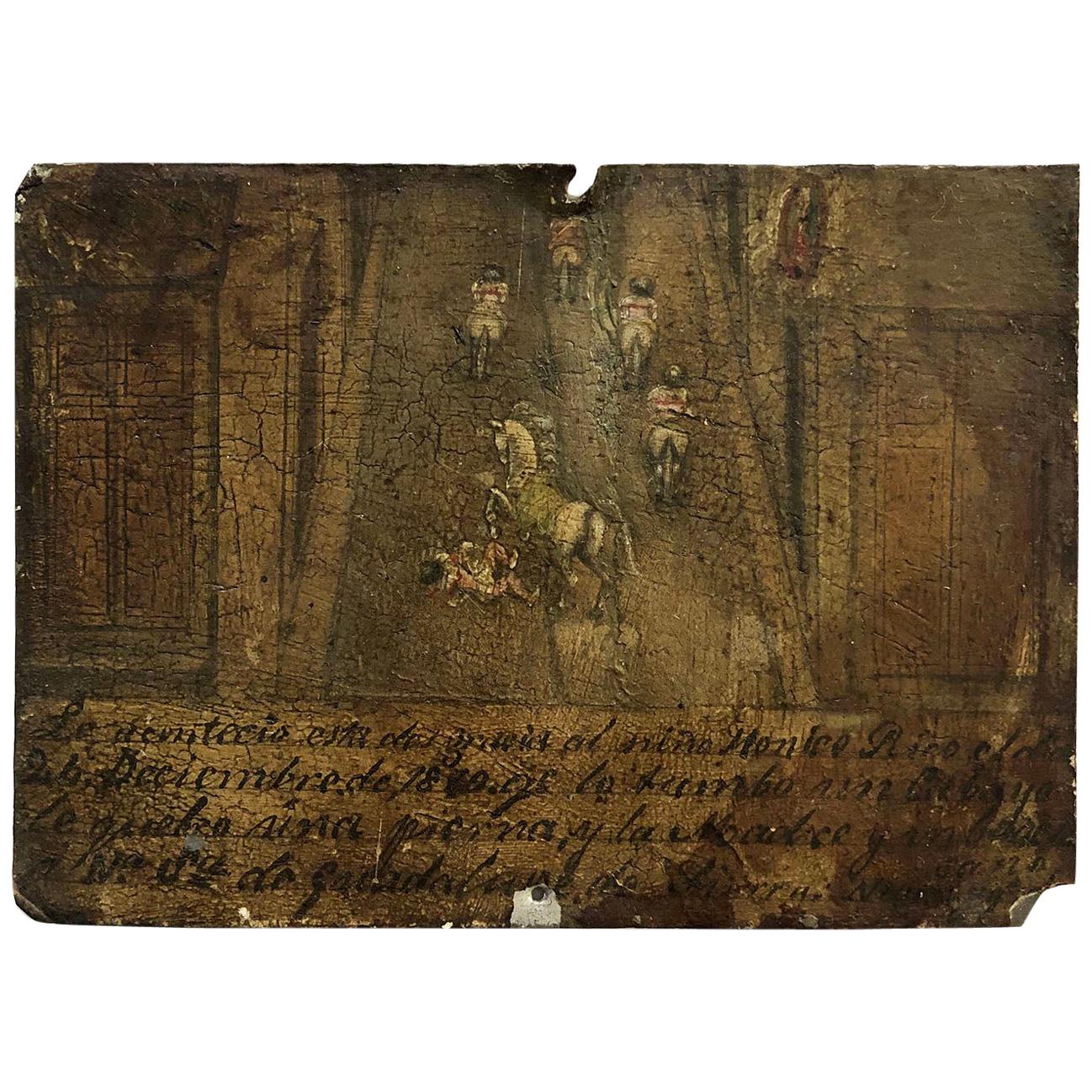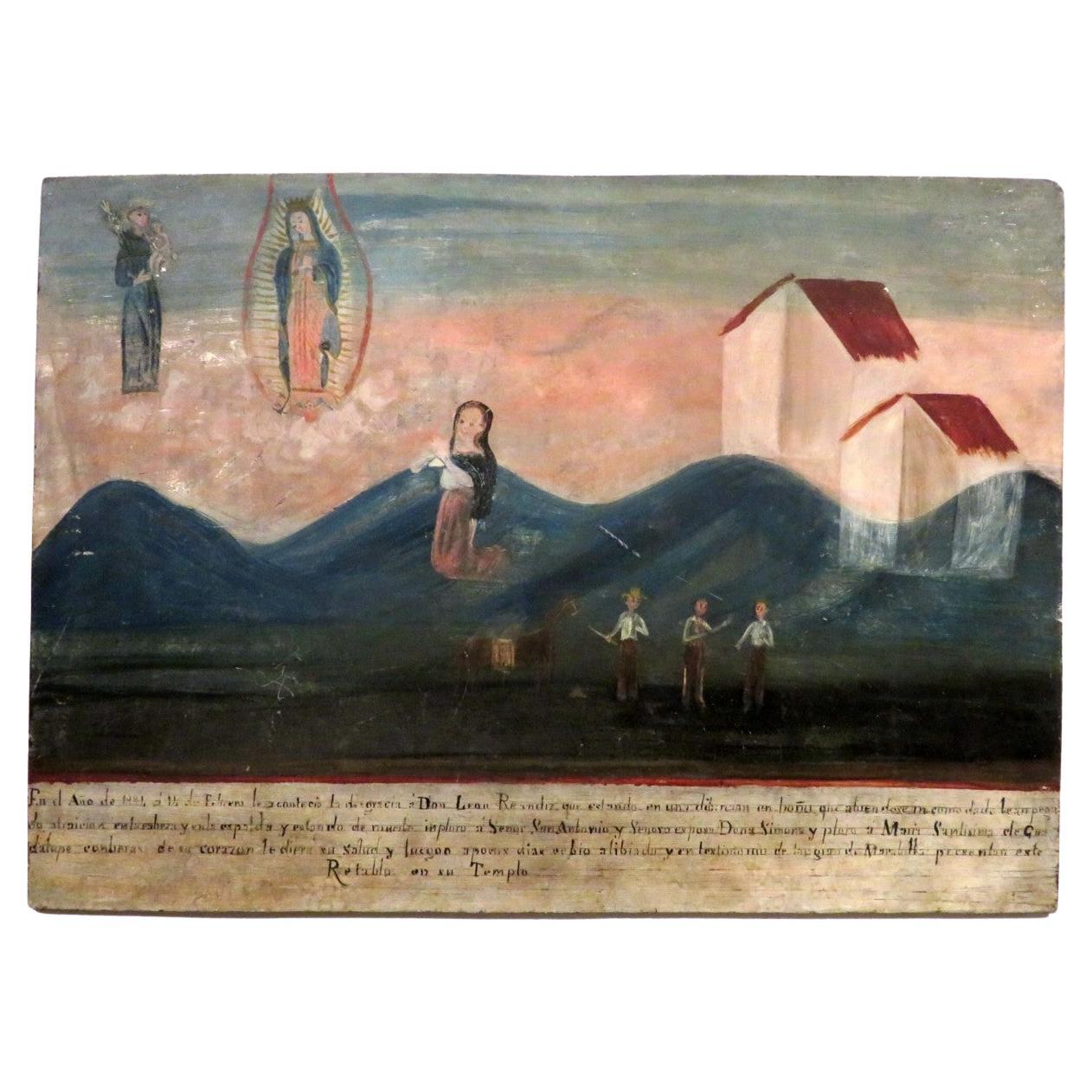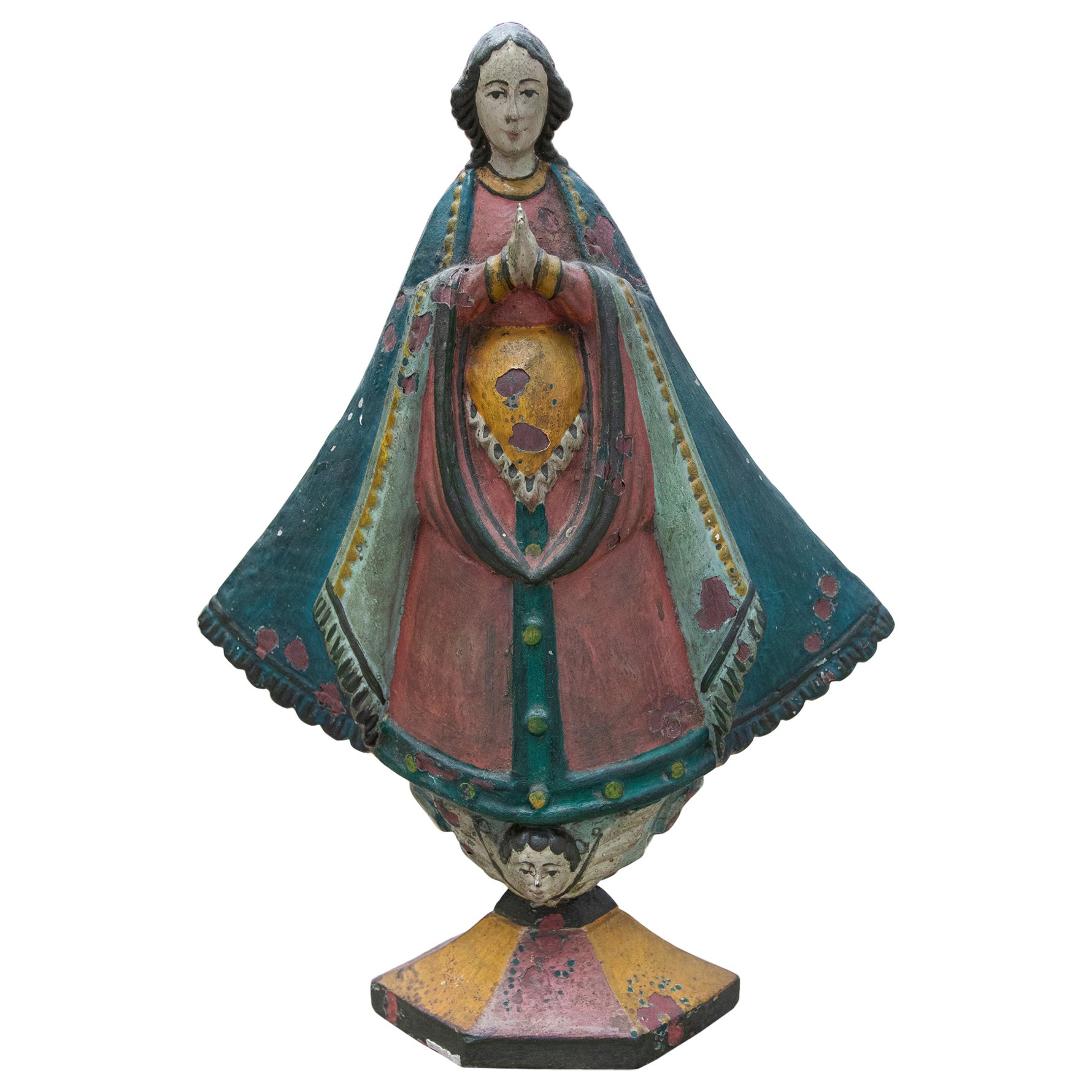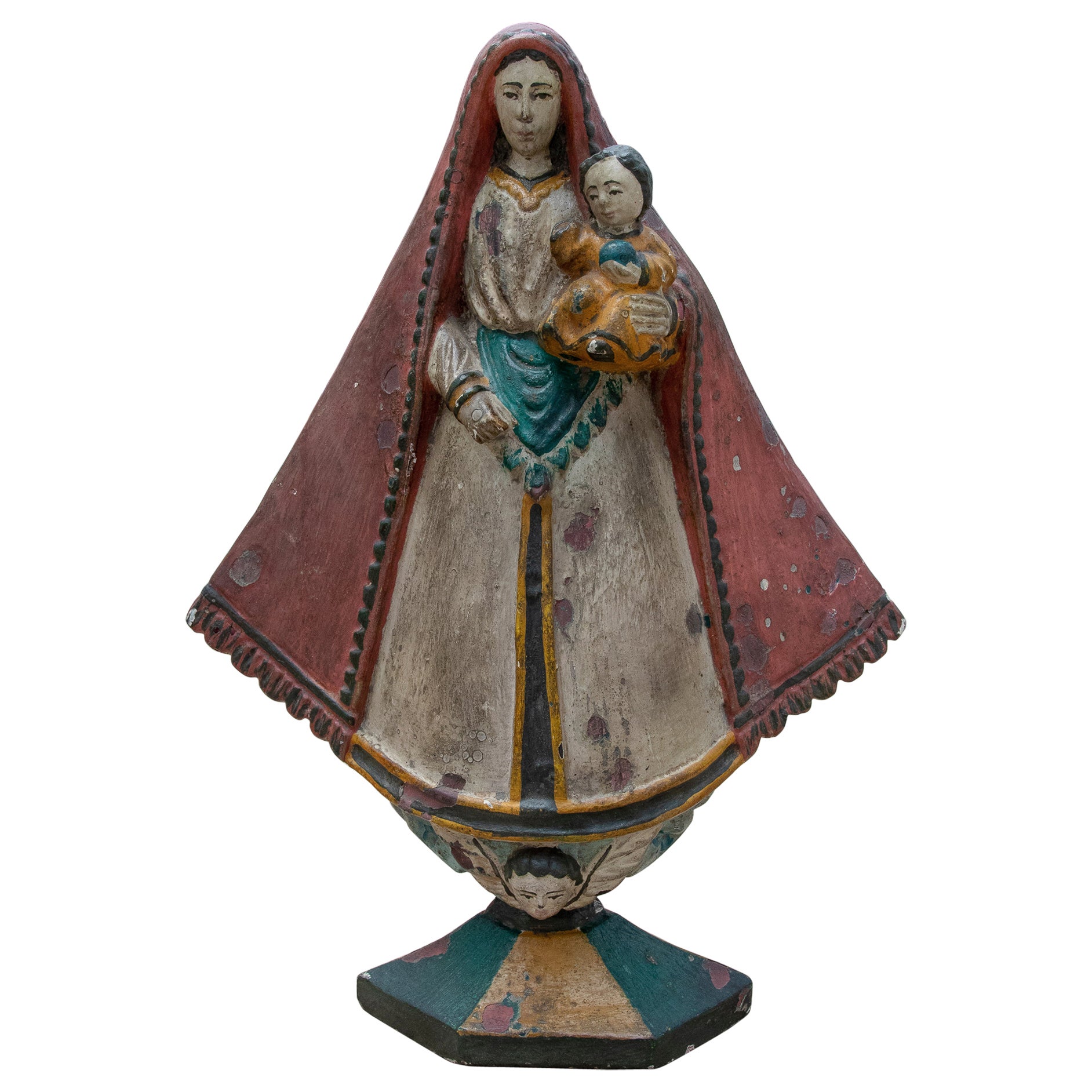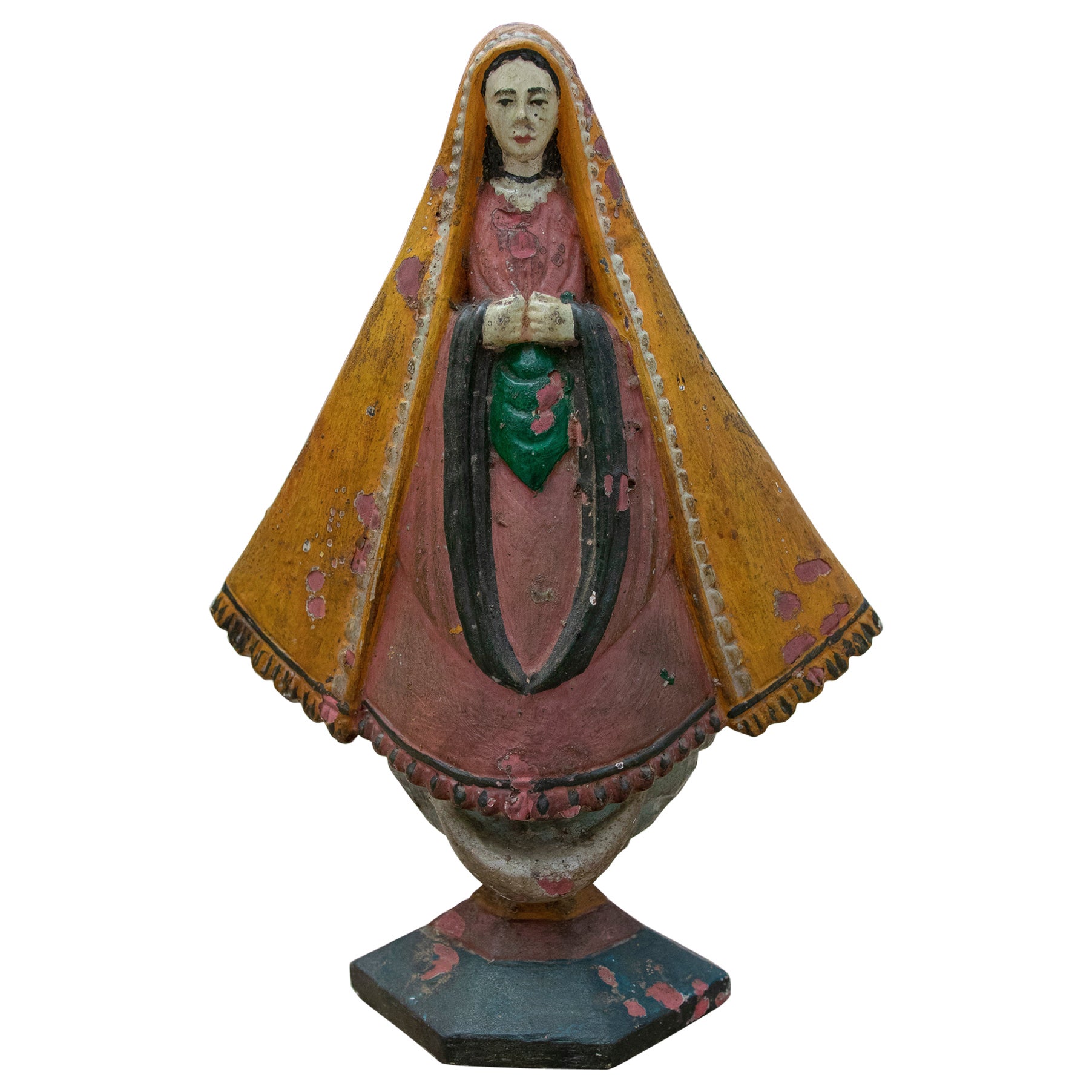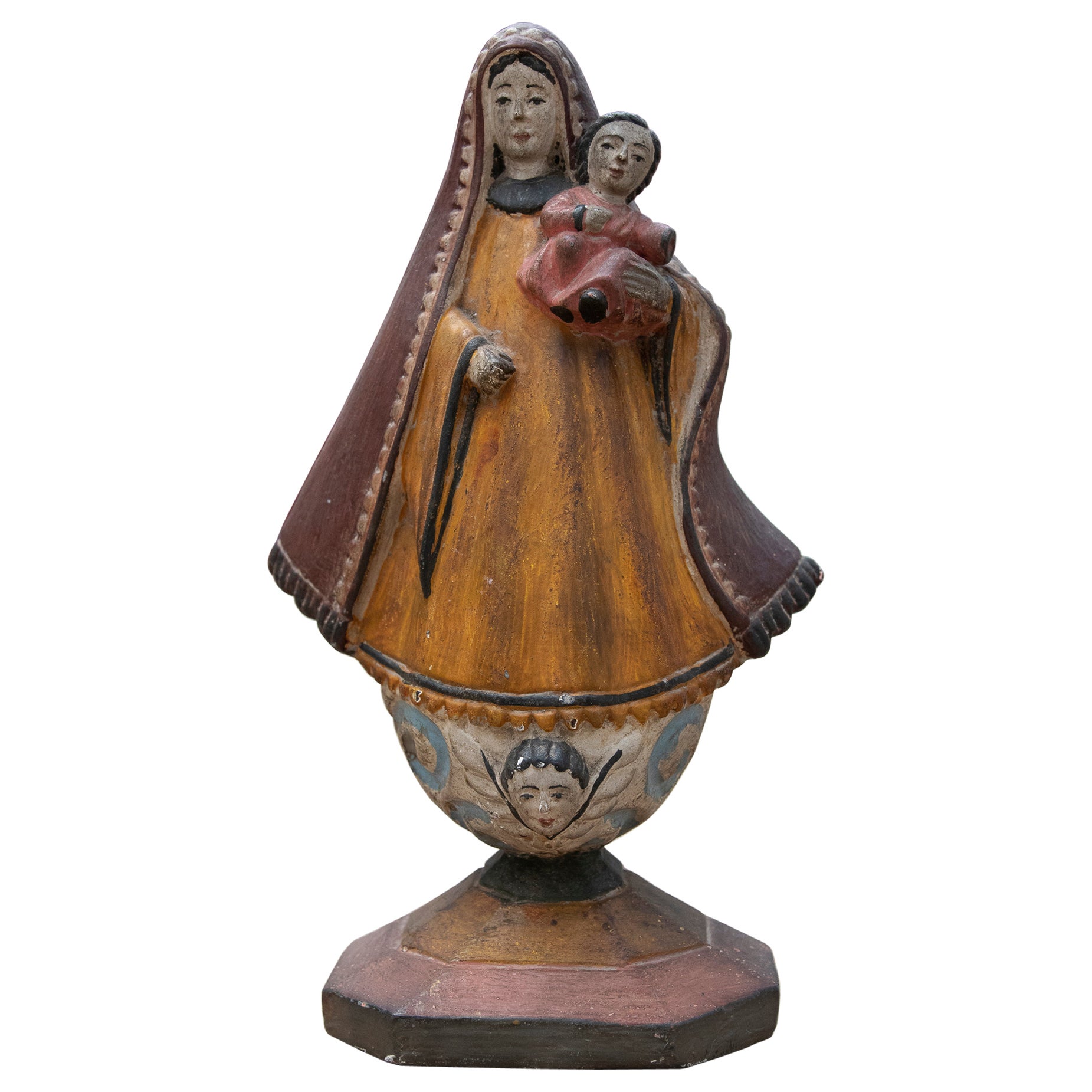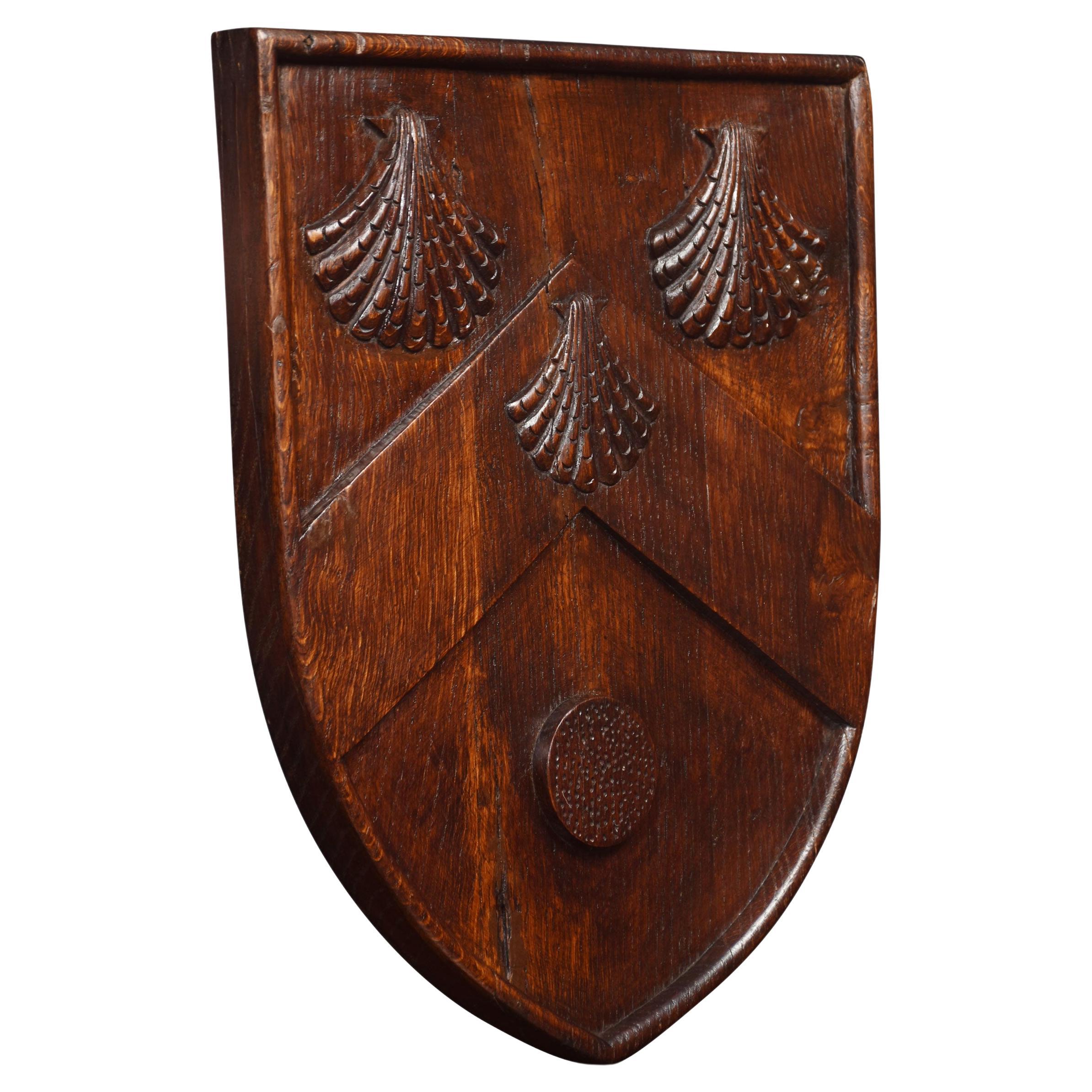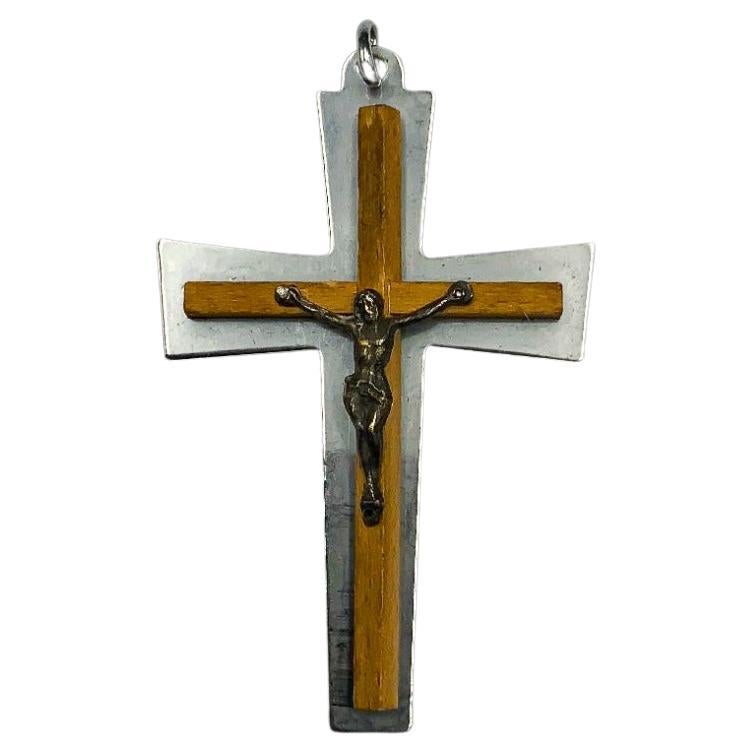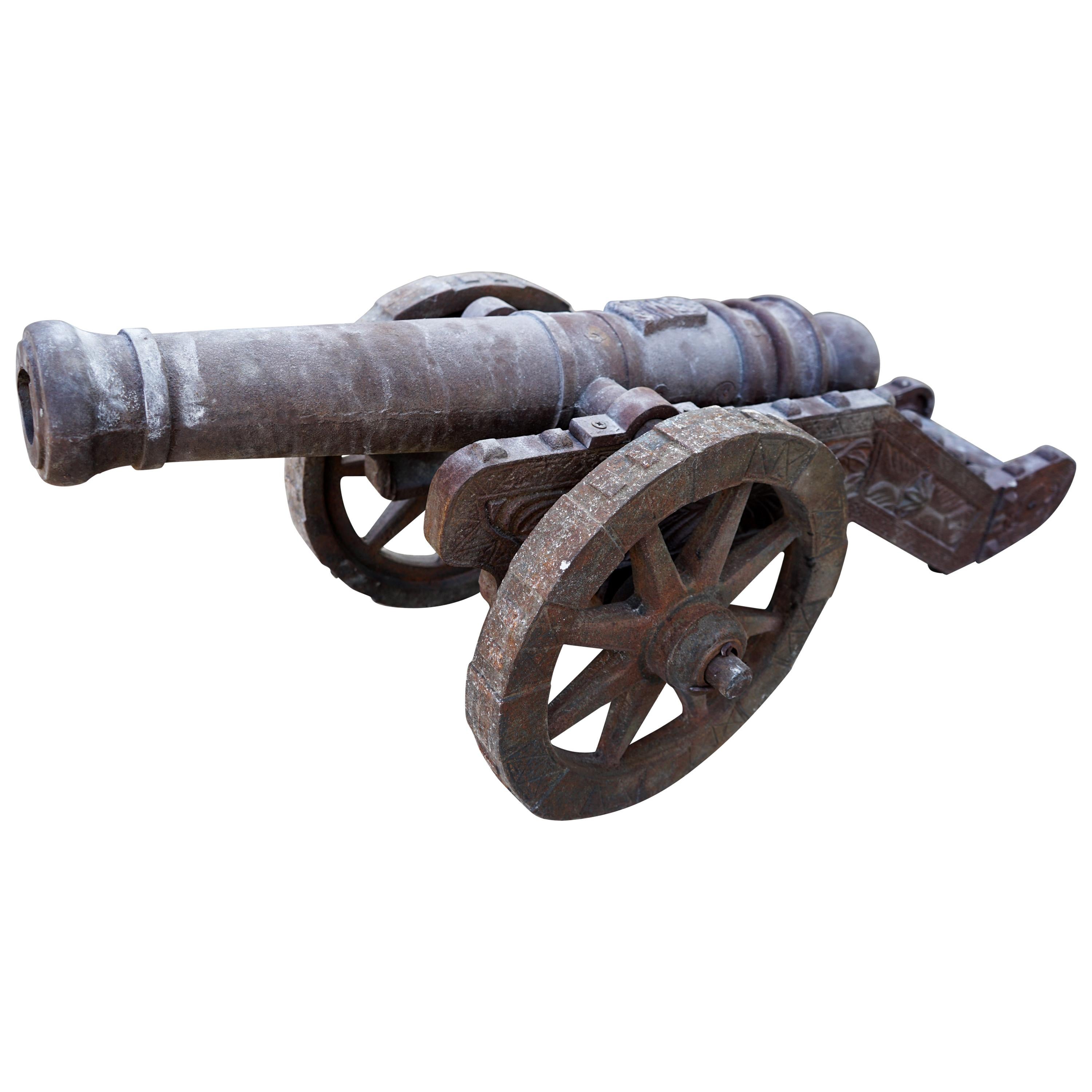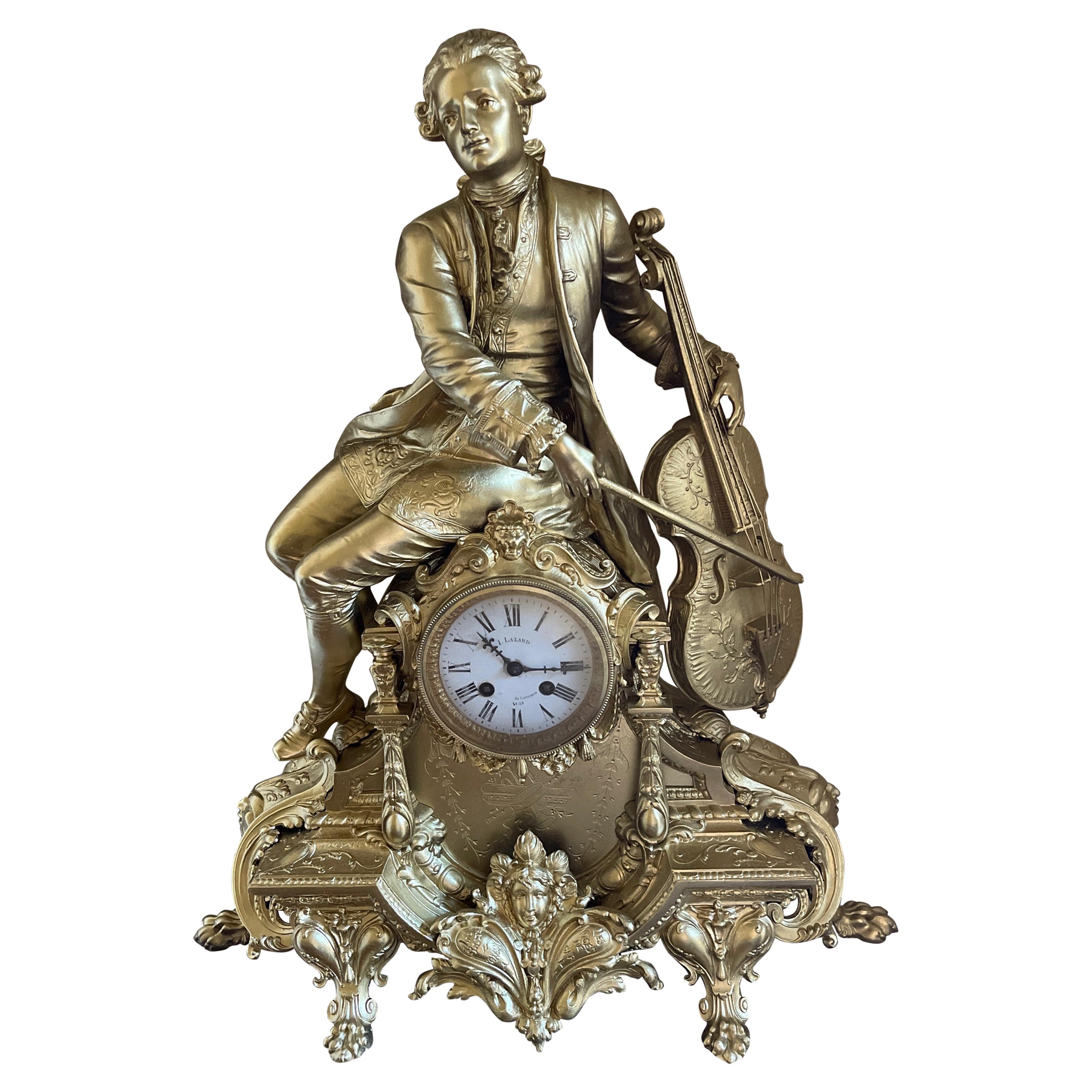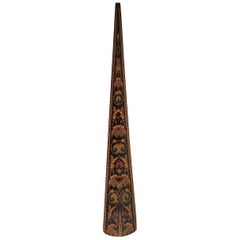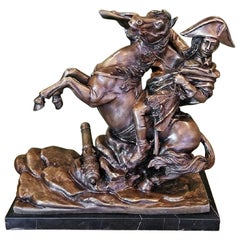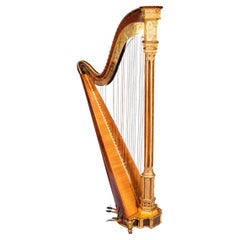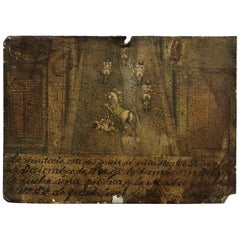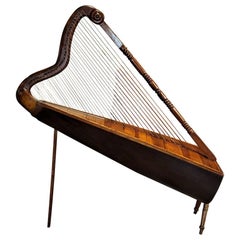
19th Century Jalisco Mexican Harp
View Similar Items
Want more images or videos?
Request additional images or videos from the seller
1 of 17
19th Century Jalisco Mexican Harp
About the Item
- Dimensions:Height: 57 in (144.78 cm)Width: 18 in (45.72 cm)Depth: 52.5 in (133.35 cm)
- Style:Country (Of the Period)
- Materials and Techniques:
- Place of Origin:
- Period:
- Date of Manufacture:1880
- Condition:Repaired: Good condition for it’s age and use. Repair to neck. Repair to one of the legs and the hinged support is a later replacement. Wear consistent with age and use. Minor structural damages. Good condition for it’s age and use. Repair to neck. Repair to one of the legs and the hinged support is a later replacement.
- Seller Location:Dallas, TX
- Reference Number:1stDibs: LU3978121665042
About the Seller
4.9
Platinum Seller
These expertly vetted sellers are 1stDibs' most experienced sellers and are rated highest by our customers.
Established in 2015
1stDibs seller since 2018
349 sales on 1stDibs
More From This SellerView All
- Rare 19th Century English Tunbridgeware Hair Pin or SlideLocated in Dallas, TXPresenting an absolutely gorgeous and extremely unique and rare 19th century British Tunbridgeware hair pin/bobbin or slide. This slide is unlike any of it’s kind we have seen before…. it is a very rare survivor ! From circa 1860–1880. Made of walnut with gorgeous marquetry inlay on the entirety of the front with classic Tunbridgeware micro-mosaic all over the front. The rear is walnut. The marquetry inlay appears to be various different woods, namely, maple, walnut and satinwood. Would have been worn in a Lady’s hair bun with the micro-mosaic facing forward. This would have belonged to a very elegant lady in the mid to late 19th century. Tunbridge ware is a form of decoratively inlaid woodwork, typically in the form of boxes, that is characteristic of Tonbridge and the spa town of Royal Tunbridge Wells in Kent in the 18th and 19th centuries. The decoration typically consists of a mosaic of many very small pieces of different coloured woods that form a pictorial vignette. Shaped rods and slivers of wood were first carefully glued together, then cut into many thin slices of identical pictorial veneer with a fine saw. Elaborately striped and feathered bandings for framing were pre-formed in a similar fashion. There is a collection of Tunbridge ware in the Tunbridge Wells Museum and Art Gallery in Tunbridge Wells. The famous makers of Tunbridge ware were in the Tunbridge Wells area of Kent; their most notable work was from circa 1830-1900. Early makers of Tunbridge ware, in Tunbridge Wells in the mid-18th century, were the Burrows family, and Fenner and Co. In the 19th century, around 1830, James Burrows invented a technique of creating mosaics from wooden tesserae. Henry Hollamby, apprenticed to the Burrows family, set up on his own in 1842 and became an important manufacturer of Tunbridge ware, employing about 40 people. Edmund Nye (1797–1863) and his father took over the Fenner company when William Fenner retired in 1840, after 30 years in partnership with him. Thomas Barton (1819–1903), previously apprenticed at the Wise factory, joined the Nyes in 1836, and worked as Nye’s designer; he took over the business in 1863 and continued there until his death. In Tonbridge (near to Tunbridge Wells), George Wise (1703–1779) is known to have had a business in 1746. It continued with his son Thomas, and Thomas’s nephew George (1779–1869), who took over in 1806. In its early years the company made articles such as workboxes and tea caddies with prints of popular views; later items had pictures created from mosaics. Their workshop in Tonbridge, Wise’s Tunbridge Ware Manufactory, was next to the Big Bridge over the Medway; the building was demolished in 1886 to widen the approach to the bridge. Tunbridge ware became popular with visitors to the spa town of Tunbridge Wells, who bought them as souvenirs and gifts. Articles included cribbage boards, paperweights, writing slopes, snuffboxes and glove boxes. At the Great Exhibition of 1851, Tunbridge ware by Edmund Nye, Robert Russell and Henry Hollamby was shown; Edmund Nye received a commendation from the judges for his work. He exhibited a table depicting a mosaic of a ship at sea; 110,800 tesserae were used in making the picture. The manufacturers of Tunbridge ware were cottage industries, and they were no more than nine in Tunbridge Wells and one in Tonbridge. The number declined in the 1880s; competent craftsmen were hard to find, and public tastes changed. After the death of Thomas Barton in 1903 the only surviving firm was Boyce, Brown and Kemp, which closed in 1927. Marquetry was an old technique which was continued by Nye and Barton to create images such as birds or butterflies. ‘Green Oak’ as caused by the fungus Chlorociboria aeruginascens. Stickware and half-square mosaic was invented by James Burrows in about 1830: a bunch of wooden sticks of different colours, each having triangular or diamond-shaped cross section, were tightly glued together; in the case of stickware, the resulting block was dried, then turned to form an article such as the base of a pincushion. For half-square mosaic, thin slices were taken from the composite block, and applied to a surface.[1][2][4] Tesselated mosaic, was a development by James Burrows of half-square mosaic; it was adopted by George Wise and Edmund Nye. Minute tesserae were used to form a wide variety of geometric and pictorial designs. Many sorts of wood were used for the various colours; about 40 were in regular use. Only natural colors were used; green was provided by “green oak”, produced by the action of fungus on fallen oak. Designs for articles were often taken from designs of Berlin wool work.Category
Antique Late 19th Century English High Victorian Collectible Jewelry
MaterialsSatinwood, Walnut
- 19th Century Bronze Sculpture of Napoleon Crossing the AlpsLocated in Dallas, TXPRESENTING A LOVELY late 19C Bronze Sculpture of Napoleon Crossing the Alps. 19th Century Bronze of Napoleon on Horseback in Battle, with c...Category
Antique Late 19th Century French Napoleon III Figurative Sculptures
MaterialsBelgian Black Marble, Bronze
- 19th Century Large Civil War Era Bronze and Tin PitcherLocated in Dallas, TXPresenting a fabulous historic treasure of times past, namely, a 19th century large Civil War Era bronze and tin pitcher. From circa 1850, this is an American frontier piece. I...Category
Antique Mid-19th Century American American Classical Pitchers
MaterialsBrass, Bronze, Copper, Tin
- Early 19th Century Aquatint Engraving of Grey Momus, John Frederick Herring Snr.By John Frederick Herring Sr.Located in Dallas, TXPresenting a fabulous and very rare, original early-19th century chromolithograph engraving after a painting by John Frederick Herring Snr., engraved by Ch...Category
Antique Early 19th Century English Early Victorian Prints
MaterialsPaper
- 19th Century French White Alabaster Bust of Lady in BonnetLocated in Dallas, TXPresenting a beautiful 19th century French white alabaster bust of lady in Bonnet. From circa 1880, this bust is gorgeous in it’s detail and subject matter. Made in probably, Franc...Category
Antique Late 19th Century French Country Busts
MaterialsAlabaster
- 19th Century Standard Grade Wooton DeskBy Wooton Desk Co.Located in Dallas, TXPresenting a highly desirable and quite rare 19th century standard grade Wooton desk. This desk was made in Indiana, circa 1880 by the Wooton Desk Co. Made of walnut and burled walnut. Black cast iron hardware. Fully marked. In the Gallery we have excepts from the Smithsonian Institution publication concerning the history of “The King of Desks ….Wooten Patent Secretary” by Betty Lawson Walters (a copy of which will be furnished with the desk upon purchase). Wooten Desks...Category
Antique Late 19th Century American Late Victorian Desks
MaterialsWalnut
$10,725 Sale Price44% Off
You May Also Like
- Early 19th Century Parcel Gilt Gothic Revival Harp By Sebastian ErardBy Sébastien ÉrardLocated in Dublin, IEA very fine and elegant Regency Satinwood and parcel-gilt double action Harp from the workshop of the famous harp and piano maker Sebastian Erard (1752-1831), decorated in the Grecia...Category
Antique Early 19th Century English Gothic Revival Musical Instruments
MaterialsBrass
- 19th Century Original Mexican Retablo "Exvoto" Oil on TinLocated in Mexico City, CDMXDated 1870, we offer this 19th century original Mexican retablo "Exvoto" oil on tin, due to the effects of time, the writing has been erased but we can read the nex: “Le aconteció esta desgracia al niño Monico Rico el día 26 de Diciembre de 1870 que lo tumbo un caballo le quebró una pierna “This misfortune happened to the child Monico Rico on December 26, 1870, when a horse knocked him down and broke his leg Votive paintings...Category
Antique 1870s Mexican Folk Art Religious Items
MaterialsMetal
- A Very Good 19th Century Hand Painted Mexican Retablo Dated 1884Located in Ottawa, OntarioThe naïve, hand painted vignette depicts a woman praying to the images of Saint Anthony holding The Christ Child, together with The Holy Mother, all shown hovering above a group of t...Category
Antique Late 19th Century Mexican Folk Art Religious Items
MaterialsTin
- 19th Century Mexican Wooden Hand-Painted Virgin with Child in ArmsLocated in Marbella, ES19th century Mexican wooden hand-painted virgin with child in arms.Category
Late 20th Century Mexican Figurative Sculptures
MaterialsWood
- 19th Century Mexican Wooden Hand-Painted Virgin with Child in ArmsLocated in Marbella, ES19th Century Mexican wooden hand-painted virgin with child in arms.Category
Antique Mid-19th Century Mexican Figurative Sculptures
MaterialsWood
- 19th Century Mexican Wooden Hand-Painted Virgin with Child in ArmsLocated in Marbella, ES19th century Mexican wooden hand-painted virgin with child in arms.Category
Late 20th Century Mexican Figurative Sculptures
MaterialsWood
Recently Viewed
View AllMore Ways To Browse
Musical Harp
Harp Instrument
Antique Old Musical Instruments
Standing Trumpet
Bass Instrument
Spanish Harp
Large Mosaic Box
1980s French Mahogany
Harp Musical Instrument
Micro Fiber
Antique Post Office Boxes
Post Office Box Antique
Antique Post Office Box
Post Office Boxes Antique
Old Antique Violins
Antique and Vintage Violins
Violins Antique Musical Instruments
Antique American Violins

